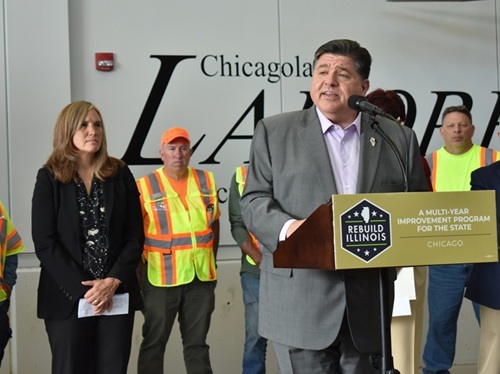The New Jersey Department of Transportation awarded $23 million in federal funding has been obligated to local bicycle and pedestrian projects through its Transportation Alternatives Program or TAP grants on Oct. 26, the agency said in a statement.
[Above photo by the New Jersey National Guard.]
There were 18 projects totaling $18.6 million in TAP grants, NJDOT added, along with 14 “Safe Routes to School” grants totaling $2.3 million. An additional $2.2 million was authorized for “Safe Routes to School” work administered by Transportation Management Associations.

The agency noted its TAP program funds a variety of projects including: the design and construction of on-road and off-road trail facilities for pedestrians, bicyclists, and other non-motorized forms of transportation; community improvement activities, such as “streetscaping” and corridor landscaping; the construction of scenic turnouts, overlooks, and viewing areas.
NJDOT added that recipients of the TAP funds are responsible for delivery and administration of the project, including design, right-of-way, and construction. In addition, the agency said grant recipients must abide by all rules set forth by FHWA and get two years to plan and deliver the project specifications before any funds are obligated.

Pedestrian-focused transportation projects are also getting closer scrutiny from the National Transportation Safety Board, which recently issued a 4-page executive summary of its Pedestrian Safety Special Investigation Report; a report NTSB said in a statement it expects to publish “in a few weeks.”
The report includes 11 recommendations NTSB said it is giving to three federal agencies: eight to the National Highway Traffic Safety Administration; two to the Federal Highway Administration; and one to the Centers for Disease Control and Prevention — all in an effort to help reduce pedestrian fatalities via vehicle-based changes and infrastructure improvements, alongside more pedestrian-focused data gathering and analysis.

“Pedestrian safety is a universal issue – we are all pedestrians,” Robert Sumwalt, NTSB’s chairman, said in a statement. “Pedestrian safety requires a multi-faceted approach of engineering, education, enforcement, encouragement and evaluation so all road users are provided safe facilities and use them as intended.”
The agency noted that pedestrian fatalities have increased every year since 2009, with 5,987 pedestrians killed in 2016 due vehicle crashes, and that the average number of pedestrian deaths has increased to 16 per day.
 States
States
Illinois Unveils Historic $50B Infrastructure Program
October 10, 2025 States
States

